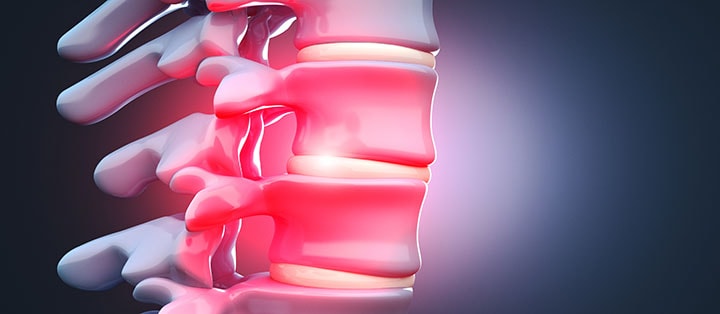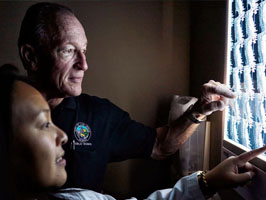The spine, also commonly referred to as the “backbone”, is a complex system made up of vertebrae, shock-absorbing discs, cartilage, joints, muscles and ligaments. Its purpose is to protect the spinal cord, facilitate movement and support the weight and flexibility of the upper body. A great deal of stress is placed upon the spine as we perform everyday activities. Over time, the spine begins to deteriorate as a result of constant strain and exertion, as well as the intervertebral discs becoming less hydrated.
Disc extrusion is a degenerative spine condition that can lead to nerve compression, pain, discomfort and other debilitating symptoms. Each intervertebral disc in the spine is comprised of a tough, protective outer shell and a soft, liquid-like inner nucleus. When these discs are subjected to wear and tear or accidents, their walls can become susceptible to tears that allow the inner liquid to leak into the spine, pressing upon nearby nerves and disrupting the spine’s stability. An extruded disc is sometimes referred to as a “herniated” or “ruptured” disc.

Disc Extrusion Causes
The body’s natural aging process is the primary cause behind disc extrusion. However, there are many additional factors that can spur disc extrusion or speed its onset, including:• Sudden injuries, traumas or accidents, such as those that may occur during a fall, high-impact sport or car crash
• The repetition of strenuous movements, including jobs that involve a significant amount of manual labor and sports that demand the use of the lower back
• Improperly lifting heavy objects
• Smoking
• Malnutrition
• Excess weight or obesity
• Lack of exercise
• Genetic predisposition or congenital complication
• A blow to the back
• Sudden twisting
• Rapidly sitting or standing, especially in elderly adults
If you believe you may be at risk for premature or intense disc extrusions, schedule a consultation with one of our highly-skilled spine specialists. Through proactive treatment, the symptoms and severity of a disc extrusion can often be managed effectively and inhibiting secondary conditions can be avoided. Obtaining prompt care is also important in order to rule out other potential causes of pain, such as a tumor or spinal stenosis.
Disc Extrusion Symptoms
Usually, an extruding disc does not become noticeable until it begins to affect nearby tissues. Some of the most common symptoms of disc extrusion include:• Stiffness or soreness
• Muscle weakness
• Acute or chronic pain that radiates from the compressed nerve and associated extremities
• Numbness or a pins-and-needles sensation
• Tingling or burning sensationsSharp, sudden pangs
• An inability to perform everyday activities like bending, rising or sitting down without encountering discomfort or pain
• Neck, arm or leg pain
The symptoms of a disc extrusion vary widely and depend upon the location and amount of damage done to the affected disc.

